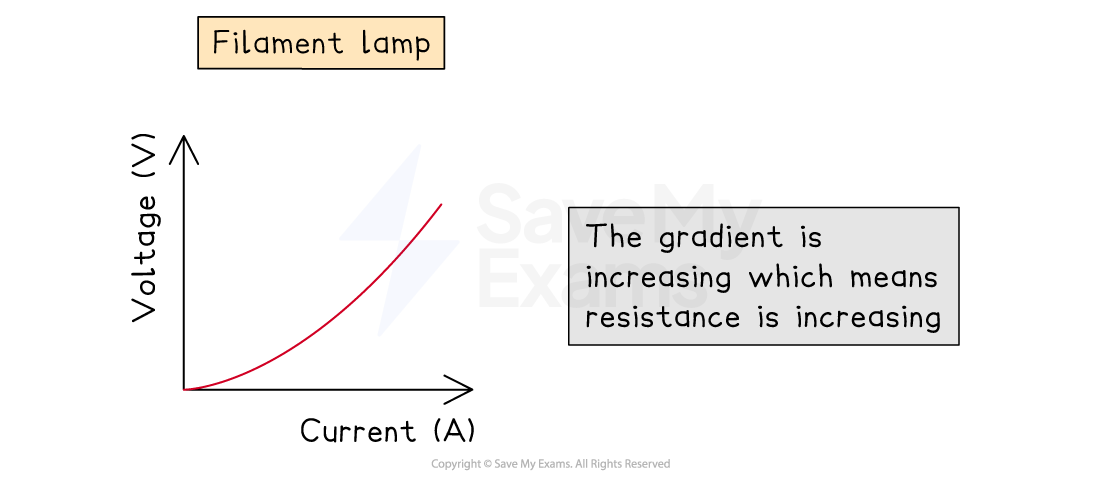Resistance & Temperature (SQA National 5 Physics): Revision Note
Exam code: X857 75
Resistance & temperature
The resistance of some components, such as a filament lamp, is not constant
It changes with the current in the component
The V-I graph for a filament lamp shows that, as voltage increases
the current increases at a proportionally slower rate
the resistance increases; the steeper the slope, the greater the resistance
Voltage-current graph for a filament lamp

The resistance of a filament lamp increases as the temperature of the filament increases
The current increases at a proportionally slower rate than the potential difference because:
the current causes the filament in the lamp to heat up
as the filament gets hot, its resistance increases due to the collisions between the electrons and metal ions in the wire
this opposes the current, causing it to increase at a slower rate

Unlock more, it's free!
Did this page help you?